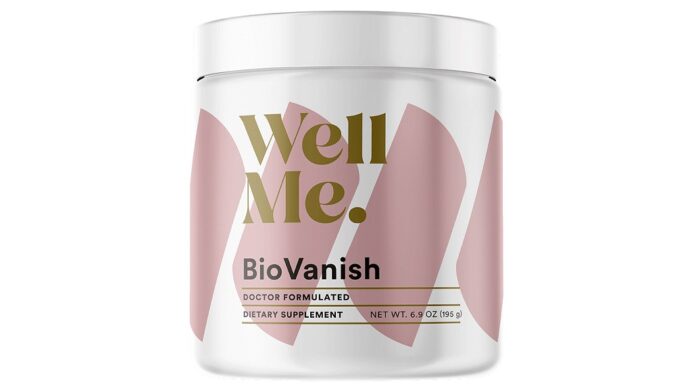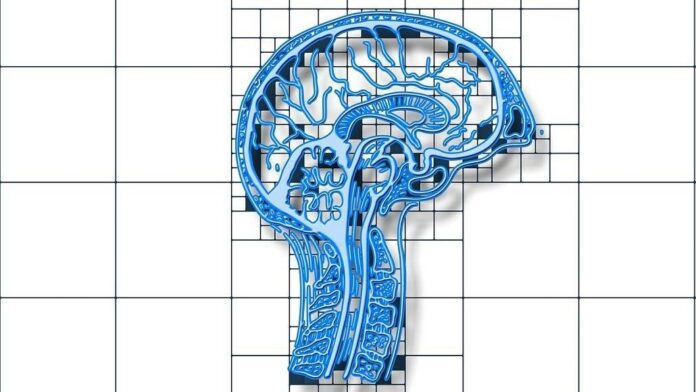BioVanish is a cocoa-flavored powder that supports natural weight loss without strict diets. It is a simple, tasty option with clean ingredients and is growing in popularity.
Read honest BioVanish reviews and see if the Wellme supplement lives up to its claims. Find real results and what users think in 2025.
Official Website: Click Here
What Is BioVanish?
BioVanish, a powdered weight loss supplement crafted by WellMe, stands out in the market with its unique selling points. Unlike harsh fat burners, BioVanish offers a rich cocoa flavor, making it a user-friendly option for mixing with water or milk. The powder is carefully formulated with clean ingredients, excluding artificial flavors, gluten, soy, dairy, and GMOs. This clean-label status has earned the trust of health-conscious users, making BioVanish a top choice for those seeking a natural weight loss solution.
Instead of promising overnight miracles, BioVanish targets people who want a steady, sustainable change. It fits right into today’s weight loss supplement market, where demand for natural, safe alternatives is high. The focus is on healthy adults who want extra help with metabolic slowdowns, especially if diets and exercise alone have let them down.
BioVanish stands out for its user-friendly approach. It avoids harsh stimulants and works with your body’s fat-burning abilities. From busy professionals to parents juggling family life, BioVanish is designed for anyone looking to slim down naturally, making them feel that the product is convenient and easy to incorporate into their daily routine.
How Does BioVanish Work?
BioVanish takes a science-rooted path to weight loss by focusing on metabolic flexibility and fat oxidation. The key trick lies in boosting your body’s beta-hydroxybutyrate (BHB) levels. BHB is a natural ketone your body produces when burning fat for fuel. High BHB levels trigger your system to burn stored fat more readily, similar to the process seen in a keto diet—but without giving up carbs.
The “9-carbon fats” from coconut (called medium chain triglycerides, or MCTs) are the heart of BioVanish. These healthy fats are easy for the liver to turn into ketones, giving you fast, steady energy and curbing the urge to snack. Alongside MCTs, there’s a blend of B vitamins, which help keep metabolism running and fight tiredness. L-theanine adds a calming touch, keeping stress in check.
Herbal extracts round out the formula, supporting digestion and helping your body adjust to burning more fat. The overall result is better fat burning, improved appetite control, and the freedom for your body to switch smoothly between burning sugar and fat. BioVanish is made for people who want to avoid the crash and are familiar with stimulant-based products.
BioVanish Ingredients: Science-Backed Components
BioVanish earns its name from its transparent, high-quality ingredient list. Let’s break down what’s inside and the science behind each component, instilling confidence in the audience about the product’s effectiveness and reliability.
- Vitamin B6: Essential for breaking down protein and carbs, B6 also helps regulate mood and aids in the body’s energy-producing processes. Studies show it’s key for metabolic health.
- Vitamin B12: Needed for nerve function and energy. Low B12 is linked to fatigue and slower metabolism. Supplementing helps maintain active energy levels all day.
- Folate: Supports the breakdown of fats and proteins and helps regulate appetite. Folate is also crucial for heart and brain function.
- L-theanine: Found in green tea, L-theanine naturally promotes calm without drowsiness, supports clear thinking, and reduces cravings—perfect for weight management.
- Medium Chain Triglycerides (MCTs): These fats, especially from coconut, are quickly absorbed and burned for fuel, spiking ketone levels to ramp up fat use.
- Herbal extracts (including coconut-derived ingredients): Support digestion and smooth absorption, making the formula work naturally and efficiently.

The blend of vitamins and natural extracts creates a one-two punch: it helps the body burn fat while fending off fatigue and cravings.
Benefits of BioVanish
Many users are drawn to BioVanish for what it adds and leaves out. These are the top benefits that real users acknowledge:
- Supports Natural Weight Loss: It helps the body access stored fat and use it for energy, achieving results beyond what diet or exercise alone can do.
- Enhances Energy: By boosting ketone levels, BioVanish supplies a steady stream of energy, avoiding spikes and crashes.
- Promotes a Healthy Metabolism: B vitamins and MCTs blend to keep metabolic processes humming.
- Reduces Cravings: The science-backed mix helps curb hunger between meals, making it easier to stick to healthy eating.
- Lifts Mental Clarity: L-theanine and B vitamins sharpen focus, banish brain fog, and maintain a steady mood.
- Supports Healthy Digestion: The natural extracts soothe digestion and are helpful for those who struggle with bloat or dietary discomfort.
These effects, combined, make BioVanish appealing to people who want more than a number on the scale.
Pros and Cons: BioVanish Honest Assessment
Like any supplement, BioVanish has its pros and cons. Based on user stories and scientific research, here’s a balanced assessment of where BioVanish shines and where it could be improved.
Pros:
- Easy To Use: No handful of pills—just one scoop daily, mixed in your favorite drink.
- Great Taste: The cocoa flavor goes down smoothly, with no weird aftertaste.
- Stimulant-Free: No jitters, racing heart, or sleep problems.
- Clean Label: No gluten, soy, GMOs, or fake additives.
- Trusted Guarantee: A 180-day money-back policy lets you try risk-free.
- Visible Results: Many reviews mention more energy or fat loss in 4-8 weeks.
Cons:
- Limited Retail Access: It is only available on the official website, so it won’t be in local stores.
- Price for Single Jars: One jar is pricier than standard multivitamins, but bulk deals help.
- Possible Adjustment Period: Some users notice minor digestive changes in the first week.
- Not for Everyone: This should be avoided by pregnant or breastfeeding women without talking to a doctor.
The pros, especially the satisfaction guarantee, and taste, push BioVanish ahead of many weight loss powders.
Possible Side Effects of BioVanish
With any supplement, looking at safety and what users experience is smart. BioVanish is considered safe for most healthy adults due to its natural ingredients. Still, a few side effects can crop up, especially in the first week:
- Mild digestive discomfort can range from bloating to a bit of gas or loose stool. Most people find symptoms fade within days.
- Rare serious effects: Most reports online are mild, but anyone with allergies to coconuts or who is sensitive should be careful.
- Not suitable for certain people: Pregnant and nursing women, kids, and anyone on prescription meds for liver, kidney, or metabolic problems should talk to their doctor before starting.
Most users see no harsh side effects, especially if they start with small servings and increase slowly. The product’s stimulant-free nature means no racing heart or insomnia, setting it apart from many fat burners.
How To Use BioVanish, Money-Back Guarantee, and Pricing?
BioVanish keeps things simple so that adding it to your day becomes a habit, not a hassle. For best results, follow these steps:
- Daily use: Mix one scoop of powder with water, milk, or your preferred beverage. Drink with or after breakfast for the best effects throughout the day.
- Consistency matters: Use daily for at least a month to start seeing more substantial weight, energy, and appetite benefits.
All BioVanish purchases come with a 180-day money-back guarantee. If you’re unhappy with the results, you can request a full refund, making it a zero-risk trial for first-time users. This extended window shows the brand’s confidence—and buyers report smooth, friendly customer service.
Pricing is based on supply size. You can buy:
- One jar: $59 (enough for about a month)
- Three jars: $49 each (three months’ supply) + 2 free bonuses
- Six jars: $39 each (best value, six months’ supply) + 2 free bonuses
These deals are only available on the official website, not in stores or on third-party platforms. Bulk orders offer the biggest savings and, in some cases, include free shipping.
Conclusion
BioVanish has become a natural, science-backed solution in a crowded market. Its clean ingredients, focus on metabolic health, and stimulant-free profile win points for safety and user satisfaction. Reviews often highlight more steady energy, less snacking, and gentle but real weight loss over weeks, not days.
This powder isn’t a quick fix or a magic wand. It’s built for adults who want a realistic, supplement-supported path to weight loss, especially those who value convenience, taste, and clean formulas. The 180-day money-back guarantee keeps the risk low, making it easier to try out and see real results.
BioVanish is best for health-conscious adults who want steady progress and an easier time avoiding cravings. It’s worth a look if you want to support metabolism and fat-burning while skipping harsh stimulants and restrictive diets.
What do you think about natural weight loss supplements like BioVanish? Share your thoughts, and if you’ve tried BioVanish, let us know your results in the comments below!
Click Here To Order BioVanish With A 180-day Money-back Guarantee From Its Official Website
Your Key Questions About BioVanish, Answered
How does BioVanish help with weight loss?
BioVanish helps your body use fat for energy by raising natural ketone levels. Its 9-carbon fats break down slower than typical MCTs, so you get longer-lasting energy and fewer cravings. Most people find their appetite is steadier, and they feel less bloated.
Who should use BioVanish?
BioVanish is made for adults who want a natural, non-stimulant way to help their metabolism and burn fat. It suits people with slow metabolisms, bloating, or those sensitive to dairy and GMOs.
Is BioVanish safe to take?
BioVanish uses natural ingredients and skips harsh stimulants. Most people have no side effects but check with your doctor if you have health issues or if you need to take medication.
How soon can I expect results?
Most users report more energy, better appetite control, and modest body composition changes within 3 to 8 weeks of steady use. Long-term, consistent use supports better metabolic health and sustainable weight management.
What’s the best way to use BioVanish?
Mix one scoop daily into water, milk, or a smoothie—preferably in the morning. No loading phases or cycling are needed. For faster results, stick to a balanced diet and keep moving daily.
Does BioVanish have a money-back guarantee?
Yes, every purchase has a 180-day guarantee, so you can get a full refund if you’re unhappy.



























